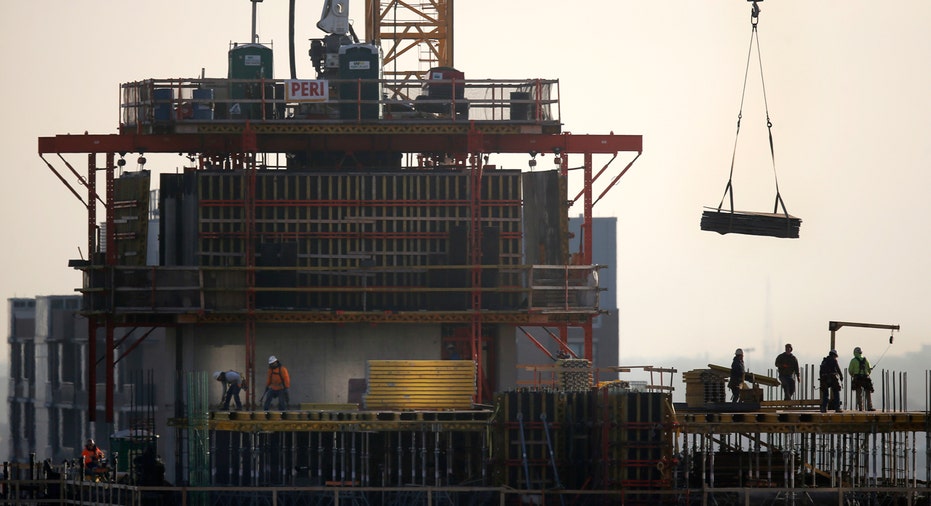US second-quarter GDP growth revised up to 3%

The U.S. economy grew faster than initially thought in the second quarter, notching its quickest pace in more than two years, and there are signs that the momentum was sustained at the start of the third quarter.
Gross domestic product increased at a 3.0 percent annual rate in the April-June period, the Commerce Department said in its second estimate on Wednesday. The upward revision from the 2.6 percent pace reported last month reflected robust consumer spending as well as strong business investment.
Growth last quarter was the strongest since the first quarter of 2015 and followed a 1.2 percent pace in the January-March period. Economists polled by Reuters had expected that second-quarter GDP growth would be raised to a 2.7 percent rate.
Retail sales and business spending data so far suggest the economy maintained its stamina early in the third quarter.
Strong growth and a labor market that is near full employment support views the Federal Reserve will lay out a plan to start unwinding its $4.2 trillion portfolio of Treasury bonds and mortgage-backed securities next month and increase interest rates in December.
With GDP quickening in the second quarter, the economy grew 2.1 percent in the first half of 2017. That was up from the 1.9 percent reported last month.
Republican President Donald Trump has set an ambitious 3.0 percent growth target for 2017, to be achieved through a mix of tax cuts, deregulation and infrastructure spending.
The Trump administration has so far failed to pass any economic legislation and is yet to articulate plans for tax reform and infrastructure. Chances are slim that the Republican-controlled U.S. Congress will debate and pass tax reform legislation before the end of the year.
So far, the political gridlock in Washington has not hurt either business or consumer confidence.
ROBUST CONSUMER SPENDING
Consumer spending, which makes up more than two-thirds of the U.S. economy, grew at a 3.3 percent rate, the fastest in a year. That was revised up from the 2.8 percent pace reported in July and accounted for the bulk of the pickup in economic growth in the second quarter.
But stronger consumer spending came at the expense of saving amid sluggish wage gains. The saving rate slipped to 3.7 percent from 3.9 percent in the first quarter. The second-quarter saving rate was previously reported at 3.8 percent.
Households cannot, however, continue to rely on savings indefinitely to fund their consumption. Despite the acceleration in consumer spending, inflation remained benign in the second quarter.
The Fed's preferred inflation measure, the personal consumption expenditures (PCE) price index excluding food and energy, increased at a 0.9 percent rate as previously reported.
Last quarter's rise was the slowest in more than two years and followed a 1.8 percent rate of increase in the first quarter. The gross domestic purchases price index, another measure of inflation pressures in the economy, increased at a 0.8 percent rate as reported last month.
Businesses helped to carry the economy in the second quarter, with spending on equipment jumping at a rate of 8.8 percent. That was the fastest in nearly two years and was an upward revision to the 8.2 percent pace reported last month.
It was the third straight quarterly increase. Investment on nonresidential structures increased at a 6.2 percent pace, rather than the previously reported 4.9 percent rate.
That was still a moderation from the January-March period's brisk 14.8 percent rate and reflected some cooling in spending on mining exploration, wells and shafts.
Inventory investment had a neutral effect on second-quarter GDP as previously reported. Inventories chopped off 1.46 percentage points from output in the first quarter.
Trade added two-tenths of a percentage point to growth instead of the previously reported 0.18 percentage point, marking a second straight quarterly contribution.
Housing was a drag on growth in the last quarter, with investment on homebuilding contracting at a 6.5 percent rate, instead of the previously reported 6.8 percent pace. It was the the worst performance in nearly seven years. (Reporting by Lucia Mutikani; Editing by Andrea Ricci)



















